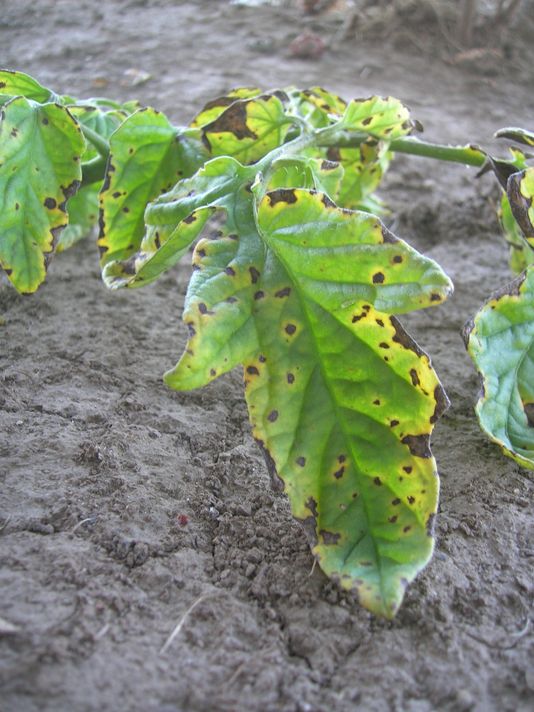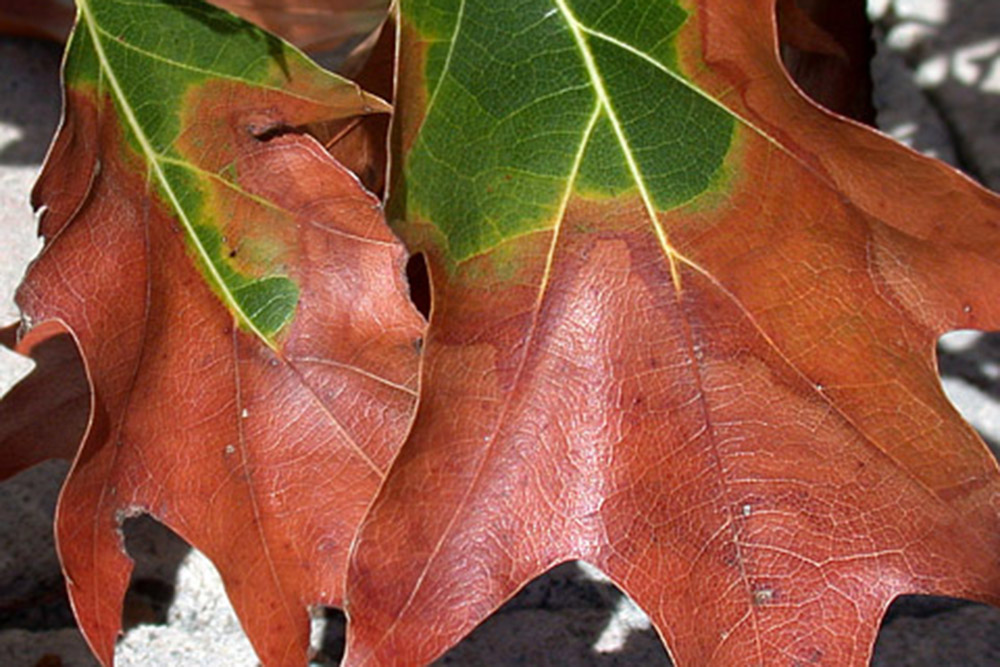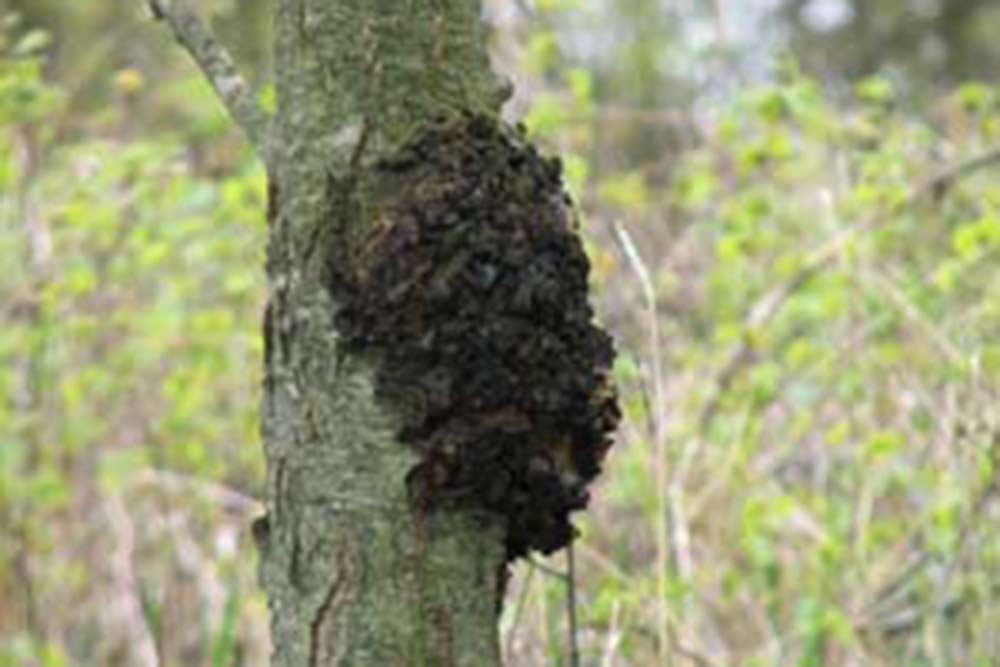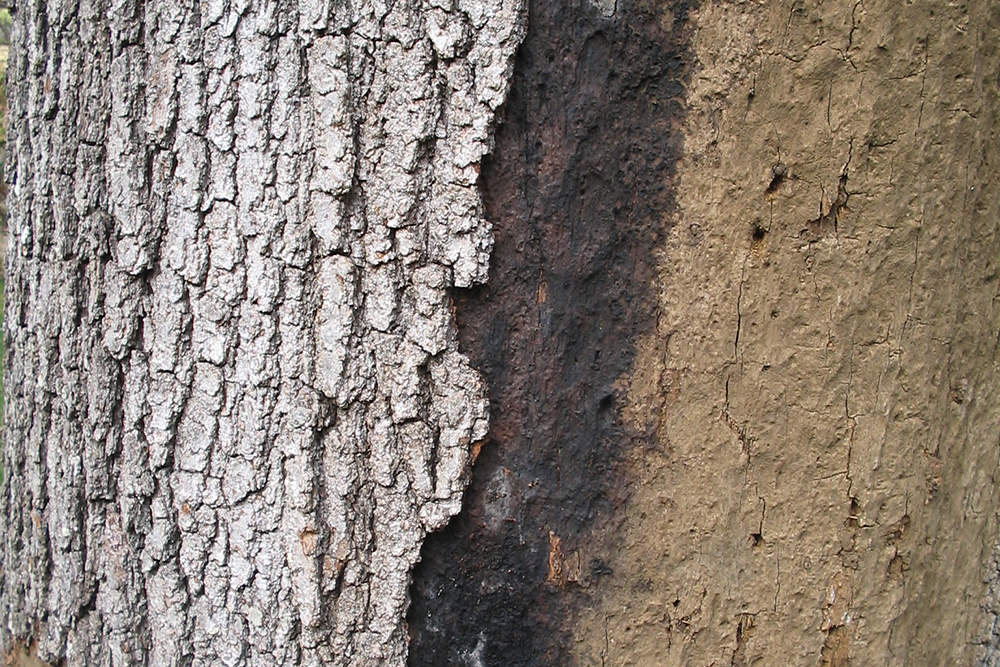Disease Diagnosis and Treatment

Fungi, bacteria, viruses, and nematodes—are any of these infecting your shrubs or trees? Many factors contribute to your plants’ susceptibility to disease, including…
- How the plant is pruned
- The time of year
- Parasitic plants
Some issues may be cleared up easily, whereas some problems can be quite severe, resulting in the death of an individual or whole groups of plants, such as the loss of many American elms from Dutch elm disease and the loss of many pines as a result of pine wilt.
Unlike most companies, we seek out the problem and begin a treatment program versus removing the shrub or tree. Whether it is diagnosing and treating existing diseases or preventing plant diseases in the first place, Schneider Shrub and Tree Care has your plants’ health in mind. With proper diagnosis and treatment, your landscape can reach its full potential.
Do your plants looks like this?

Bacterial Leaf Scorch
Bacterial Leaf Scorch (BLS) results from bacteria clogging a tree’s xylem (water transporting system), which prevents water and nutrients from reaching the tree’s roots, branches, and leaves. As a result, the leaves will brown around the edges until the whole leaf is scorched.

Black Knot
Your cherry, plum, or apricot trees are at risk for black knot, a fungal infection that attacks new twig growth or wounds on a tree. The infected area will change colors throughout the year until it turns black in autumn. The knots eventually expand and can girdle the twigs, branches, and the whole tree, resulting in your tree’s death.

Hypoxylon Canker
Hypoxylon canker is a fungus that affects shade trees (such as oaks and hickories) that have already been stressed due to drought, disease, or damage, particularly in an urban environment. Prevention is the best cure for this fungus, and your shade trees will benefit most from regular deep root fertilization.



